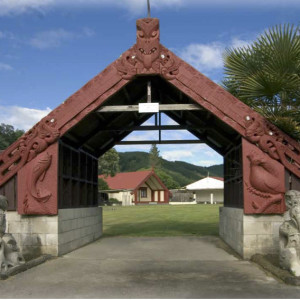This whakatauākī (tribal proverb):
- describes the takiwā (traditional area) of our Hapū – from Maungaharuru (the mountain range) in the west, to Tangitū (the sea) in the east; and
- it proclaims ahi-kā-roa (long occupation) of our Hapū and our inherited right as tāngata whenua to exercise mana whenua and mana moana.
The relationship our Hapū have with Maungaharuru and Tangitū is culturally significant and provides whānau with a strong sense of place and belonging to the takiwā. It is still customary practice for Hapū members to recite this whakatauākī to identify where we come from and the relationship that connects us to the natural world.
Hapū kaumātua also emphasise the connectedness of Maungaharuru with Tangitū. The waters flowing from the maunga (mountain) feed the rivers, lakes, wetlands and sea – the realm of Tangaroa-i-te-Rupetu (the spiritual guardian of the sea and other water bodies and all that lives within them).
The whakatauākī also describes the mahinga kai (places for gathering food) of our Hapū. The ngahere (forest) on Maungaharuru was the source of food for our Hapū in the winter. Tangitū was, and remains, the source of food in the summer. While our Hapū collected food on a seasonal basis, we were blessed in that we did not need to leave our takiwā in search of food. Hence another Hapū whakatauākī:



